Text
My Final Piece
After being disappointed with the flow of my edit yesterday I decided to completely reshuffle the footage.
I striped the documentary back down and started from the basics creating a 3 act formula to help create a narrative act that was consisted. I decided despite my proudness of my interview with Caroline Berler it just did not fit into to the final direction of the documentary.
I choose to use the song How many by Steve Lacy a powerful piece about the struggles of being Queer and coming out to help push the narrative forward.
This documentary has had many shapes and forms from which you can see from this blog and I feel my creative choices have been justified in order to create the best, most informative version of this piece.
Improvements can definitely be made for next time in terms of editing and my organisation around that. Next time I would aim to make a plan about the edit before creating attempting to cut the clips down. Maybe if I had made a story board instead of organising a rough Idea it would have worked better but i just felt If i created a storyboard it would take away from the naturalness of the documentary.
youtube
0 notes
Text
Update
The process of making this documentary was very challenging. I feel I approached the project at too many angles and was almost too passionate and close to the project that it shadowed my creative ability.
To be honest I am very proud of the interviews I carried out and research gathered but I am disappointed in the first draft of my final piece.
I feel as though my final documentary is scattered and disjointed and the pacing is not how I envisioned. As you can see throughout my documentation on this blog I have written about the different edits and drafts I have created and different angles I have approached my piece. However, the content I captured I do not believe is enough to make a great pilot documentary.
My aim when I first created this documentary was to have multiple different interviews, but due to Covid-19 and scheduling conflicts this fell through with multiple people meaning I didn't feel like I had enough footage to work with.
I had hoped that the archival footage would add to the documentary and help fill it out, i do believe it helps drive home points but at times makes the pacing very sudden and loud.
I approached this documentary through many angles with many topics I wanted to cover from case studies, porn, straight women, male gaze, representation etc. I feel I over complicated the documentary and it meant my full message did not come across. I have reduced the amount of archival footage in hopes that it does not feel like I am bombarding the audience with facts and figures to create a potential solution to this problem.
I have some final touches to do with the clips for example colour grading some over exposed and over blue elements.
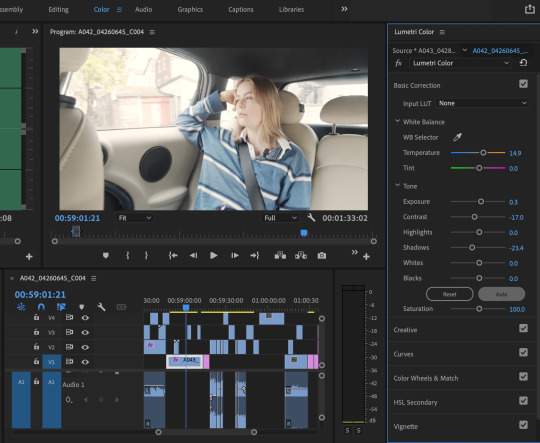
The documentary feels scattered despite me trying to edit down and create a cohesive flow. Maybe this is reflective of my ADHD but I think next time in my project that being specific is key. In my planning I covered to many ideas! I should focus on way and dive deep into the topic to explore it instead of the multiple interests I wanted to cover.
0 notes
Text
Problems and Test Edit
After some interviews falling through I found it hard to reach the 4-5 time limit as I felt the content from just two interviews would not be as informative and impactful. I decided to do some test edits with inter surprising the interviews with some archival footage I had previously edited.
Below you can see the test.
The strengths of this test are that I believe interspersing the techniques really helped drive home the point that the interviewees were making and acted as evidence in a way to what the interviewee was saying.
Negatives of this test are that the constant sudden tone changes could become too jarring and make the pacing of the documentary too uncomfortable to enjoy watching.
I decided to conclude from my findings of this test that the technique of using archival footage interspersed was useful and informative but made sure to not have this technique be too repetitive and frustrating for audiences.
youtube
0 notes
Text
Edit review - Peer feedback - Screen Test
After exporting my first draft edit of the new format of the documentary I carried out test screenings in order to gain feedback from audience members. I sent out a google form with a link to the documentary for the test screening.
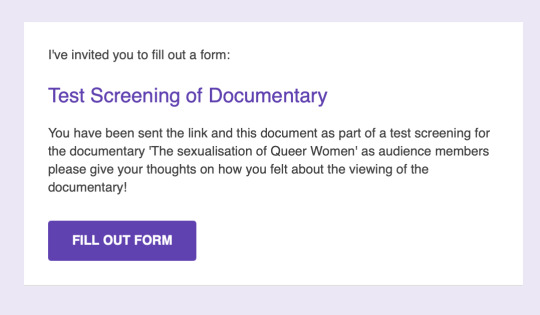
This is would the email would look like for those participating in the test screening
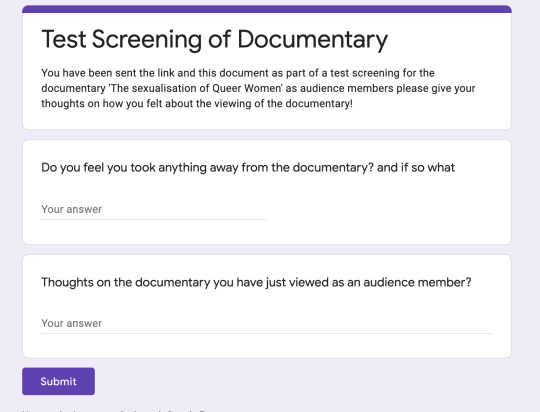
This is the questionnaire that was sent out
Below are summery from the anonymous feedback I received both positive and negative.
Feedback
Postiving feedback on the archival footage - said felt informative
People stating they found the audio of the zoom call her to understand clearly
Comments on Carlines Interview feeling out of places and found the information hard to link to the previous footage
Solutions/ Reasons
I was very pleased with this feedback as this had previously been a concern I believe by reducing the number of interruptions between the interviews and the archival footage made it more informative and understandable.
The audio on the zoom interview is unfortunately something due to Covid-19 and being in Lockdown at the time meant this was out of my control. I have tried isolating the audio and boosting it in order to hopefully make it clearer for the audience to understand.
I am going to make a test edit to see what the interview would be like without my interview with Caroline despite it being a great interview I am finding it hard to help make the documentary follow with only have two interviews.
0 notes
Text
19. Production: Sound
In order to capture the sound for my production I booked out
Radio Mic Transmitter
Pistil Grip Microphone
I decided after testing out the equipment it would be best to use the radio mic for interviewing due to the fact that you are able to isolate the sound more individually as we are not just filming in doors but also in cars.
0 notes
Text
18. Production: Editing
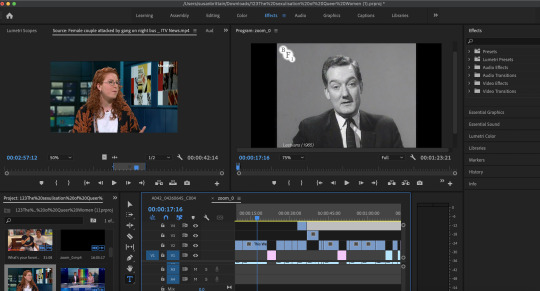
This is a screenshot of my first rough edit of my original idea. I am using Adobe premier pro to edit. I am editing on Adobe premier pro as I found this the best program to organise my clips and sequences and to be able to manipulate my clips the way I want.
0 notes
Text
17. Production: Filming
First filming location
The first filming location took place in my bedroom against a blanc wall as the first thing I filmed was a sit down interview with the Black-magic 4k. . I set up three 528 LED spot to make sure she was lit evenly and without shadows behind her.
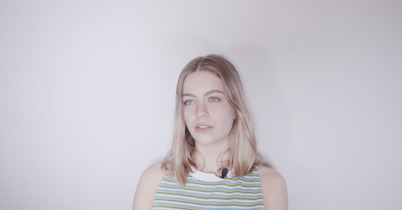
I used the Backmagic 4k camera with with a radio mic and a radio transmitter in order to capturing the sound of her voice and less of the outside noise which the pistil mic would have captured more. I used a bower-base battery for the BM to mac sure that the battery did not run out as we were unable to plug it into the mains when traverling in the car. I decided to film in 4k meaning I had 20 minuets at a time on the black magic fast card before I had to re format it.
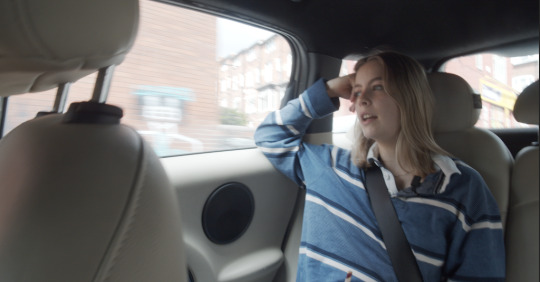
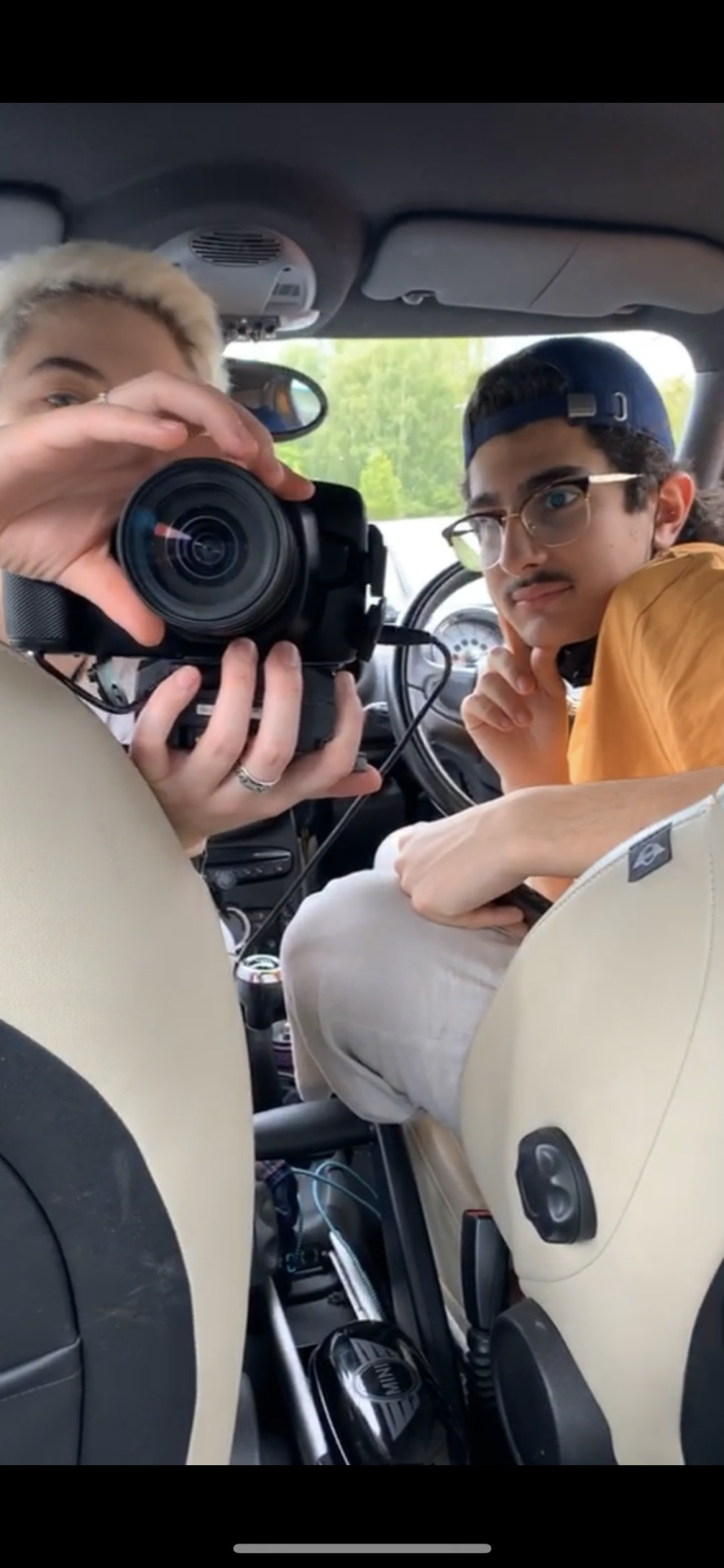
0 notes
Text
16. Update on more interviews
I had planes to interview other people but due to restrictions of Covid-19 and scheduling conflicts it made it particularly challenging.
I had reached out to some queer friends of mine but unfortunately due to Covid restrictions we were unable to meet in person and they did not have sufficient technology for this to be able to take place.
I had hoped to interview some queer content creators but unfortunately they had scheduling conflicts.

0 notes
Text
15. How my Idea has changed new film treatment
I made an originally rough edit of my documentary which I have attached to this blog post! It was inspired by other documentary makers who just use archival footage. The hope was to have the footage and inspired would be different interviews I had carried out. However after creating a rough edit I felt like it did not give the message across that I had hoped for. I felt that it was too dark and harrowing and I wanted this documentary to still come across as positive. I also felt like I would not do an interviewee justice with these clips interspersed as it felt too rushed and fast paced. I was inspired by the montage effect by - to give the audience lots of information and understanding but felt like audiences would review it as overwhelming! As I was unsure about the direction I was taking this documentary I decided to get audience feedback in order to gain an objective outsiders opinion. These are some of the notes of the feedback I received.
‘I enjoyed the fast paced element but wasn't sure where it was going’
‘It felt a bit fast for me to understand, I would maybe prefer if i had more time to take in the information’
‘I enjoyed the contrast in clips and I enjoyed the intro but i wasn't very sure where it was going to go from there’
My Film treatment has changed from the beginning. My original plan was to have interviews from many different LGBT+ members with the use of archival footage but I found the time constant of 4-5 mins meaning that it felt rushed so choose to focus on just one individual.
Interview preparation for Louise Mccloskey
Louise McCloskey is a queer content creator with over 40,000 followers/
I interviewed Louise about her experience of being queer and feminin presenting. Before our interview I sent her a list of questions and topics in order to get her familiarised with the information we will be discussing.
When did you come out?
Did being feminin presenting affect people's views and beliefs of you?
Have there been times were you have felt sexualised by others
Where do you think this sexualisation stems from? Movies? Porn?
I informed Louise that when possible to repeated the question in the answer as the aim was to make an interactive mode documentary.
In order to make sure Louise felt comfortable around these topics I made sure to familiarise myself with her online content.
youtube
0 notes
Text
13. Documentary content research #4
While carrying out re search on statistics involving porn viewership. I can across the an article publish by PornHub of their yearly statistics in 2019.
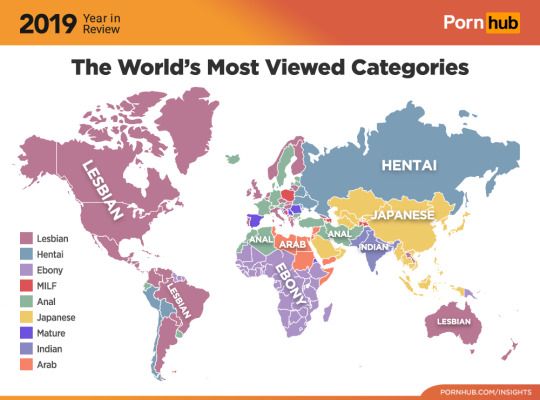
I then compiled this list where lesbian porn was the most watched category but their governmental laws do not seem to match this popularity:
Laos
No Anti-discrimination laws in employment, services, and hate speech
No marriage equality
Joint same-sex couples cannot adopt
IVF banned for Lesbians
Greece
No marriage equality
Joint same-sex couples cannot adopt
IVF banned for Lesbians
North Macedonia
No marriage equality
Joint same-sex couples cannot adopt
Single LGBT people cannot adopt
IVF banned for Lesbians
Hungary
No marriage equality it is constitutionally banned in 2012
IVF banned for Lesbians
Slovakia
No marriage equality
Joint same-sex couples cannot adopt
Single LGBT people cannot adopt
IVF banned for Lesbians
Czech republic
No marriage equality
Joint same-sex couples cannot adopt
IVF banned for Lesbians
Slovenia
No anti-discrimination laws involving hate speech
No marriage equality
Joint same-sex couples cannot adopt
Single LGBT people cannot adopt
IVF banned for Lesbians
Lithuania
No marriage equality
Joint same-sex couples cannot adopt
Single LGBT people cannot adopt
IVF banned for Lesbians
Northern island
Marriage equality only legal in 2020
Cuba
No marriage equality
Joint same-sex couples cannot adopt
Single LGBT people cannot adopt
IVF banned for Lesbians
Dominican republic
No anti-discrimination laws in employment, services, and hate speech
No laws against hate crime
No marriage equality
Joint same-sex couples cannot adopt
Single LGBT people cannot adopt
IVF banned for Lesbians
Mexico
Marriage equality in some states
Joint same-sex couples cannot adopt
Guatemala
No Anti-discrimination laws in employment, services, and hate speech
No marriage equality
Joint same-sex couples cannot adopt
Single LGBT people cannot adopt
IVF banned for Lesbians
0 notes
Text
12. Post Interview
What went well
I felt that due to my extensive research before the interview and my passion and a keen interest in the topic and Caroline Berler film Dykes, Camera, Action! Caroline and I disgusted having the open-ended discussions and more of a conversation rather than a question-answer format. This was successful as it made the interview feel more natural and also helped with coving topics just yes or no questions would have found.
Improvements
I found myself feeling very nervous and anxious before Caroline as was very impacted by her film. This affected our interview and meant that I didn't cover all the topics I wanted to due to being so nervous. I think an improvement next time would be to communicate my feelings to the interviewee and also to right down a list in front of me of extra elements I wish to discuss in order not to fumble or forget these important elements.
Technology
In terms of capturing and recording the interview, it went well. The zoom video recording captured everything. The pistil grip also captured my audio which is great in case I want to switch up the style of the documentary. However in my nervousness for the interview, I forgot to double-check the exposure settings on the camera. I had sorted them out earlier in the day but hadn't taken into account changes in the weather as I was sat in front of a large window. This was disappointing as it looks very unprofessional and is not up to the standard that I wanted to capture.

0 notes
Text
11. Filming while in a Pandemic
While creating a film during the Covid-19 pandemic i felt it was important to take a Coronavirus basic awareness on production training to make sure safety was a priority while also with the hope of carrying out this production
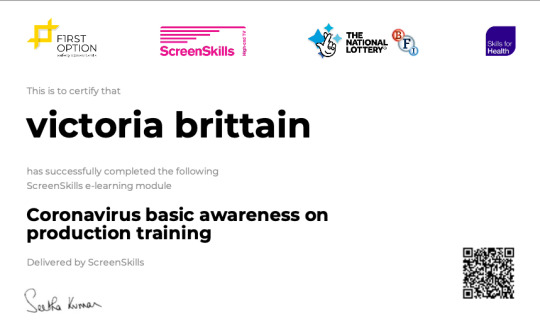
0 notes
Text
9. Interview preparation #3
Topic/Question 1
1. When do you think the sexualisation of queer women began and reasons for that?
In terms of films, you mention in your film when does it switch from disgust to being sexualised
• The Children’s Hour (1961) – Disgust
• The Killing of sister George (1968) – Disgust
• The Vampire Lovers (1970) – Disgust and Sexualised
• The Hunger (1983) – Sexualised
Was it related to the underground feminist coulter beginning in the 70’s that changed it from being seen as disgusting?
Topic/Question 2
2. What is your opinion on films about queer women being made without the presence of queer women directing?
Films mentioned in your film Saving Face, High Art, The Watermelon Women and D.E.B.S – all feature sexual content but don’t feel over-sexualised as directed by queer individuals
Contrasting to films like Blue is the warmest colour, My summer of Love and Wild Things – felt over-sexualised
I sent this information to Caroline as a rough outline of what would be-discussed in the interview. Along with this information I also attached a Contributors release form for her to sign as it is very important to get informed content for distribution.
0 notes
Text
8. Interview Preparation #2
In order to make my interview feel comfortable, I made sure to research their work in depth. Having watched the films that are mentioned in her documentary.
I will make sure during the interview to express how grateful I am about this interview and to be sure not to hide my passion about the subject away in order to make the interview not feel like they are wasting their time.
Open-ended questions like ‘What are your thoughts on this film?’. Rather than, ‘did you like this film?’. According to my research, open-ended questions are the best technique to gain lots of information from your participant.
Due to the pandemic interviews cannot take place in person. What would be best for my documentary would be a Formal sit-down interview. This will be taking place over zoom as other options like ‘walking and talking’ interviews’ are not able to be an option.
Equipment for interview
As it is taking place over zoom this is how it will be recorded. The interviewee does not have an external camera to film. This will also be how her audio is recorded. I am unsure yet whether I want to feature in the documentary as a speaker so I will book out a Blackmagic pocket camera and Pistol Microphone just in case. The pistol mic is a uni-directional microphone so will have to have it pointing directly at me off-camera in order to record me speaking. I will use the Black magic camera to gather external shots of me interviewing and also to record my audio of me.
Items I will book out of I&R
BM URSA Mini/Pro Cards/Media
BlackMagic Pocket 4K
Pistol Grip
Long XLR MIC Lead
BMPCC4K PowerBase Battery
0 notes
Text
7. Interview Preparation #1
I secured an Interview with Dyke, Camera, Action! director Caroline Berler. This interview will take place on the 18th March over zoom.
This week I will be caring out research on documentary interview techniques.
So far since finding out about the Interview I have watched these films that are mentioned in Dyke, Camera, Action!:
The Incredibly true adventure of 2 girls in Love (1995)
The Watermelon woman (1996)
The Vampire Lovers (1970)
High Art (1998)
Saving Face (2004)
The Children’s Hour (1961)
Go Fish (1994)
D.E.B.S. (2004)
0 notes
Text
6. Research of Documentary topic #3
Queer Women's Perspectives on Sexualization of
Women in Media
Renee Randazzo, Kaelin Farmer & Sharon Lamb
Important points from this study
According to a growing body of research, bisexual women experience unique forms of sexual objectification due to cultural depictions of hypersexualized bisexuality (Brewster & Moradi, 2010; Taub, 1999).
This positions bisexual women as simultaneously fetishized by media and ostracized by potential support systems (Brewster et al., 2014). Chmielewski and Yost (2013) found in a qualitative study that body image problems in bisexual women are related to their unique experiences of feeling invisible in a landscape of gender binaries and dominant models of sexual orientation that exclude their experiences.
Critical analyses of media portrayals specific to lesbianism have been less optimistic, however, pointing out that lesbian sex is often appropriated as a fleeting performance rather than an authentic identity (Diamond, 2005; Wirthlin, 2009).
Market research identifying homosexual audiences as a “dream market” provides suggestions about how to target this minority without offending the majority (Oakenfull, McCarthy, & Greenlee, 2008), but consideration of the impact of such messaging on queer audiences, particularly women, is a body of research that remains underdeveloped.
Women who identify as lesbian, bisexual, queer, and fluid have likely already embarked on this process of queering their sexuality, willfully disrupting the process by which media images influence desire. Calling upon understandings rooted in queer women’s experiences can provide guidance and inspiration to reimagine women’s sexuality in ways that deviate from the sexism that mainstream media sells.
My reflective and critical thoughts
This study was very eye opening in elements of differences certain queer women face. Bisexual women experiences is unique as they are hypersexulised in cultural depictions as being wanted and fetishizes by the media but seen as invalid and outcasts by the queer community.
Discussion that lesbian intimacies is often seen as a fleeting moment or a drunken mistake rather than an authentic identity and feeling.
I thought the discussions of the media disrupting the process of queerness was an interesting and insightful point about the construction of stereotypes and archetypes
Link to Resource
https://www.tandfonline.com/doi/pdf/10.1080/15299716.2014.986315
0 notes
Text
5. Documentary research #2
As discussed in my previous post I watched
Dykes, Camera, Action! (2018)
Call her Ganda (2018)
Edie and Thea: A very long engagement (2009)
Dykes, Camera Action – Interactive mode documentary
The Lesbians/ lesbian representation in films through out cinema history.
found its use of masked interviews extremely informative and educational. Intertwined with clips of films propelled a beautiful discussion of theory, representation and effect if the images seen on screen.
Call her Ganda - Participatory/ Reflexive mode documentary
About the murder of a Pilipino transgender women by a US marine.
The reflexive mode gave the documentary an investigative tone while making you feel as if you were grieving along with the family. It was a very powerful having the director who had a similar history to Ganda as it helped the audience empathies and gave it a powerful tone.
Edie and Thea: A very long engagement – Observational Mode Documentary
A documentary following the later life of Edith and Thea as they retell their life stories of meeting and the process to finally getting married after being engaged for 40+ years and it still not being legal in the USA at time of filming.
The observational element of this documentary created an impressive and powerful documentary. It felt as if you were a friend watching the couple interact. It made it even more upsetting when we find out about the death of Thea as we got to see her and her wife in the most beautiful and natural settings.
0 notes